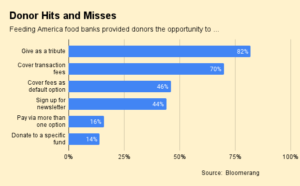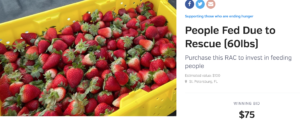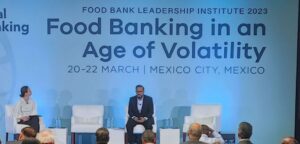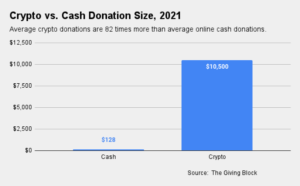For food banks seeking new pathways to raise much-needed funds, Scott Hutchings has a suggestion – ask your donors to check their sock drawers.
Hutchings estimates Americans are holding on to more than $25 billion in foreign currency carried home from trips to foreign countries – currency that’s worthless to them if not used. From the perspective of a nonprofit, however, all those foreign bills and coins could be a valuable, untapped fundraising opportunity.
“There’s a massive amount there for the taking,” Hutchings said. “I fully believe that any charity that significantly goes after this is going to reap the benefits for decades.”
Hutchings is the Co-Founder and CEO of Global Coin Solutions, a Canada-based firm that helps nonprofits, such as UNICEF’s Change for Good program, exchange donated foreign currency into local funds. Nonprofits working with Global Coin Solutions receive at least 70% of the value of the currency they collect and exchange – and up to 80% as collections grow.
In Hutchings’ view, food bank distribution networks, with their partner agencies located throughout a region, are particularly well suited to a program like this. That’s because foreign currency fundraising is all about aggregating relatively small amounts into larger sums.
The keys, Hutchings emphasized, are having multiple locations where donors can drop their cash and “creating as much awareness as possible.” In addition to using its own webpage and social media to promote its clients’ efforts, the firm encourages clients to make use of the Google Ad Grant Program as a way to spread the word.
Hutchings points to Currency for Kids, a program that Global Coin Solutions helped initiate in 2020 that today benefits twelve Children’s Aid Foundations across Ontario. With the support of a corporate partner with 19 locations and a network of businesses in the community that act as collection points, the program has exchanged almost $50,000 in foreign currency to date.
Nonprofits working with Global Coin Solutions collect unused foreign bills and coins from donors, then FedEx what they collect to the company. After Global Coin Solutions sorts, counts, and documents the currency – a completely manual process – it repatriates that currency to its country of origin, where a local firm exchanges it for funds in the nonprofit’s home currency.
Global Coin Solutions retains a percentage of what it receives and wires the rest to the nonprofit. Currencies that can’t be exchanged, such as those replaced by the euro, may be sold to collectors or bought by weight – often, Hutchings noted, for more than their face value. Nothing the company receives is thrown away.
Often, a significant amount of domestic currency is mixed in with the foreign, which adds to the value the nonprofit will receive. Most clients, Hutchings noted, don’t look at what they’ve collected before they send it to Global Coin Solutions, so it’s common for a certain amount of domestic currency to “infiltrate” collections.
While foreign currency fundraising will never supplant major gifts or grants, Hutchings encourages nonprofits to think of it as a low-cost, supplemental option – similar to collecting returnable bottles or running a food drive – where donors contribute low-value items that add up to big value. “It’s not competing, it’s augmenting. It gives [nonprofits] a completely different revenue stream. A different ask, a different give. And almost everybody’s got something,” he said.
This could be particularly appealing, Hutchings noted, for those who would like to give but for whom money is currently tight; for example, families that traveled in good times but now are visiting food pantries to make ends meet. “I think it’s a way to possibly reinvigorate the whole donation segment, because people don’t have disposable income the way that they used to,” he said.
Global Coin Solutions, which offers a variety of cash management solutions, has processed some $23 million in foreign currency since its 2015 founding. “And we handle it all one coin and one note at a time,” Hutchings said.
He added, “It is a huge opportunity. It’s just a matter of making people aware that this exists.” – Amanda Jaffe
Amanda Jaffe is a writer and former attorney with a deep interest in organizations and mechanisms that address food insecurity. Her online publication, Age of Enlightenment, is available on Substack, and her essays and articles may be found at www.amandajaffewrites.com.
Like what you’re reading?
Support Food Bank News








